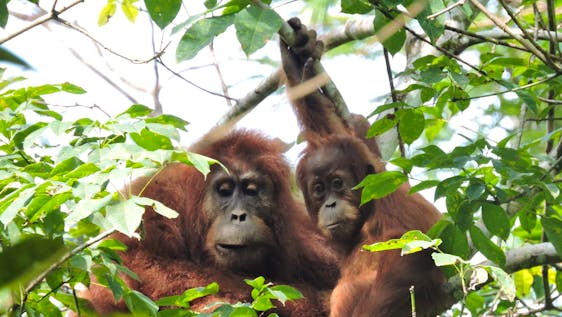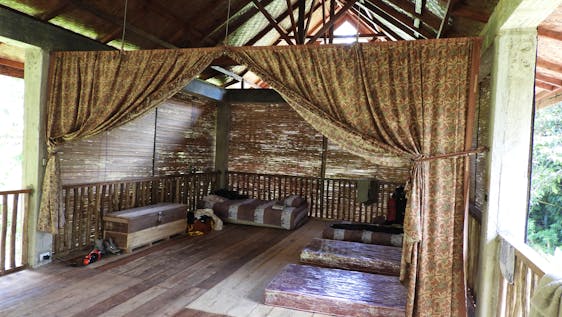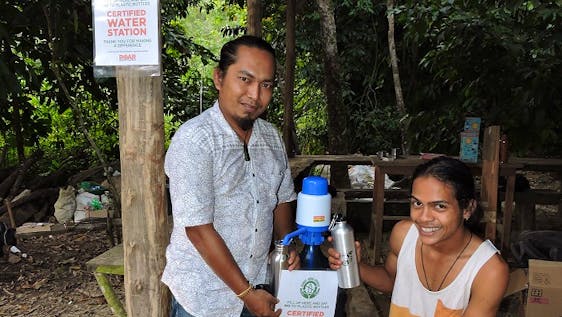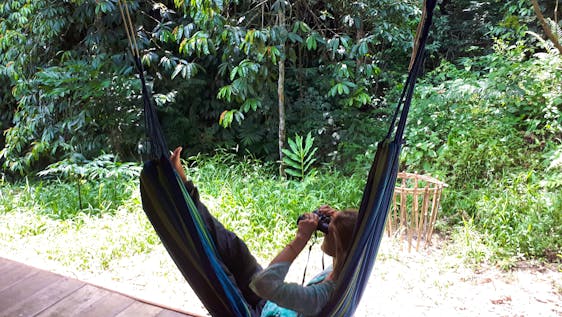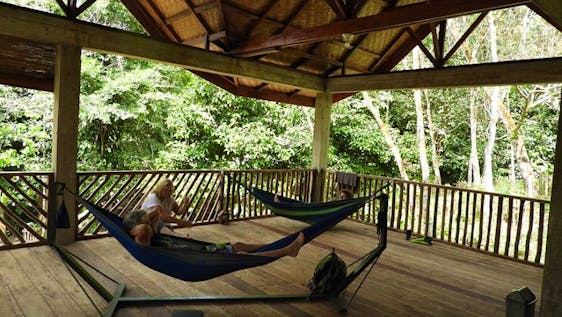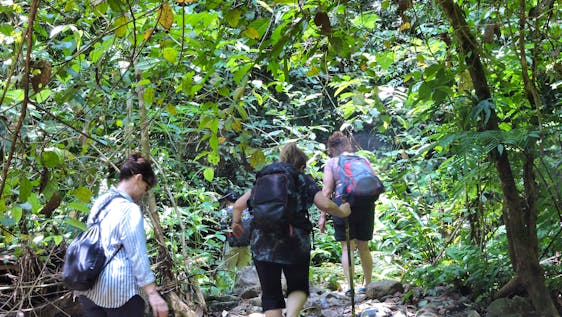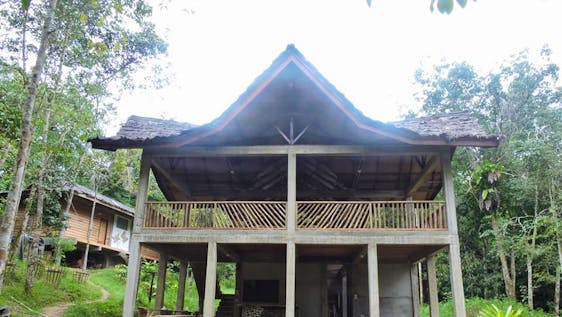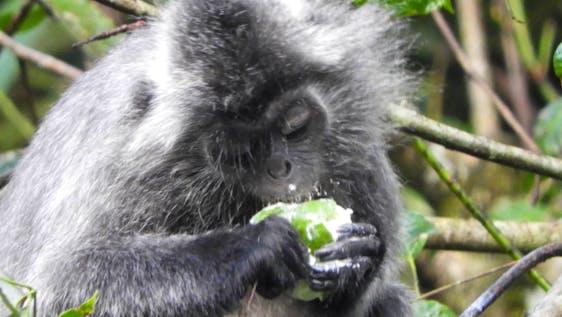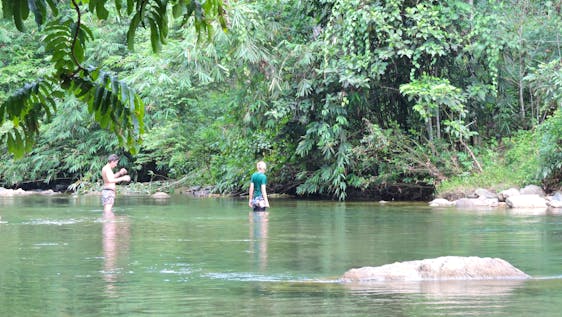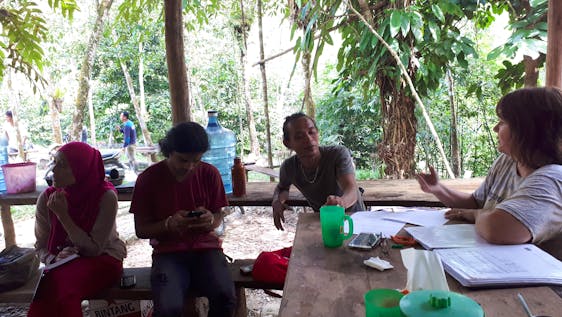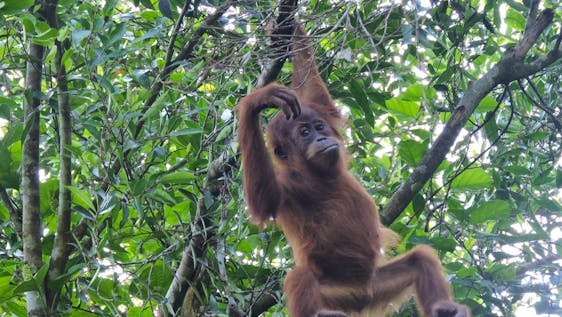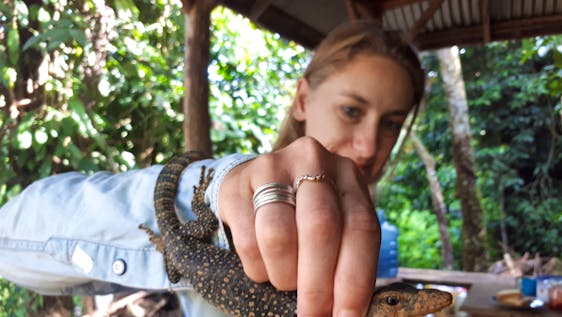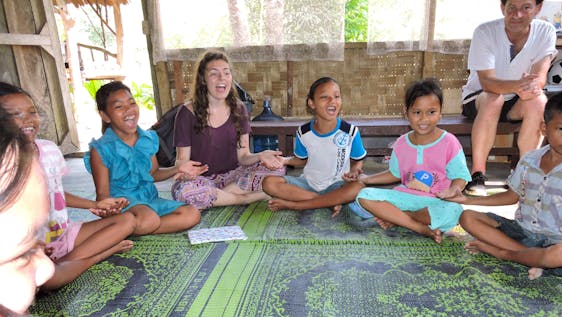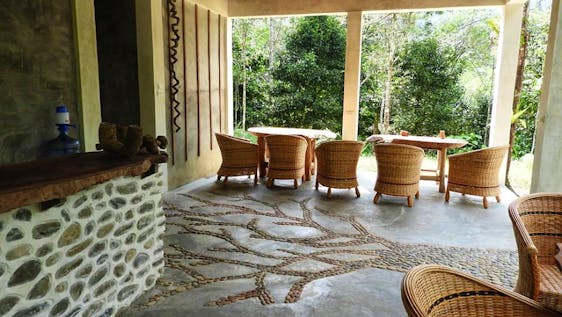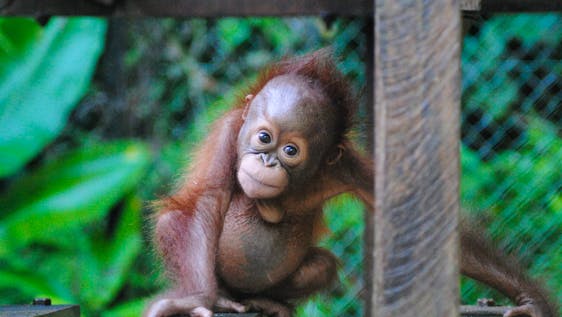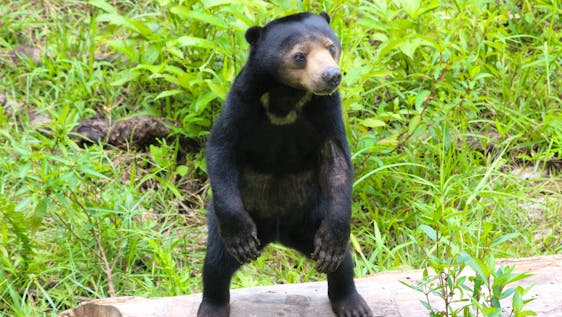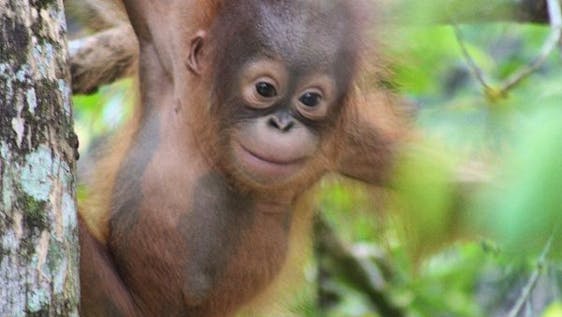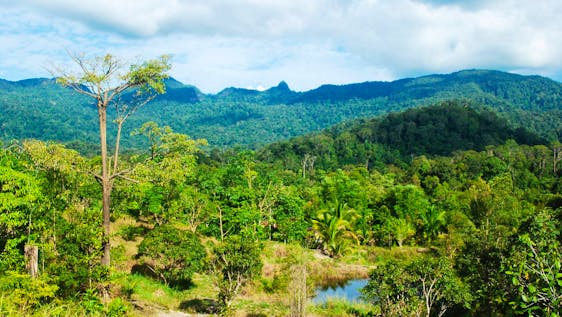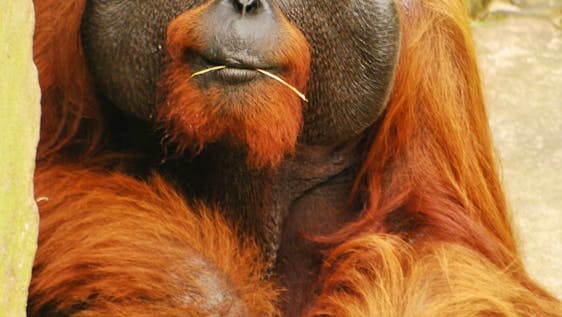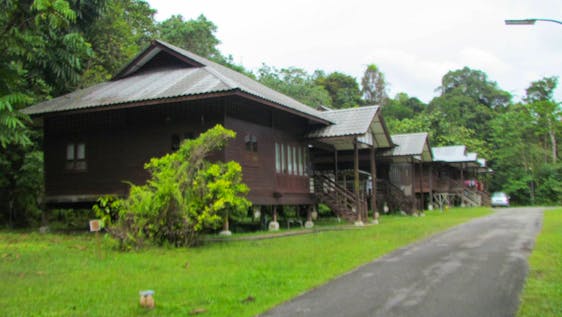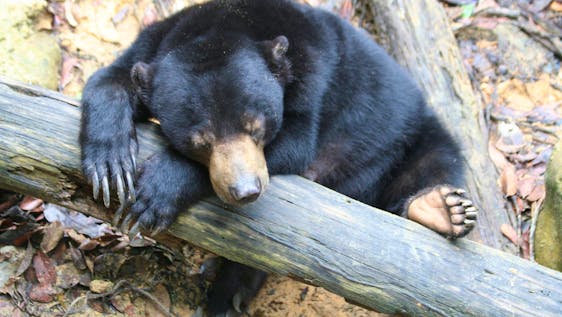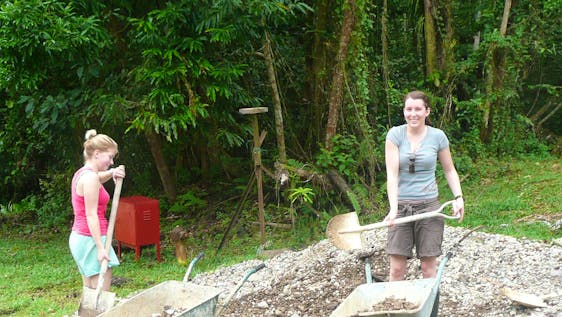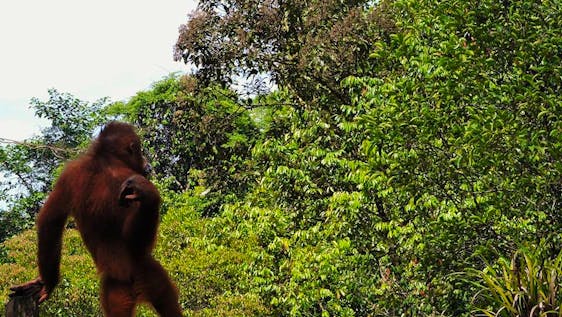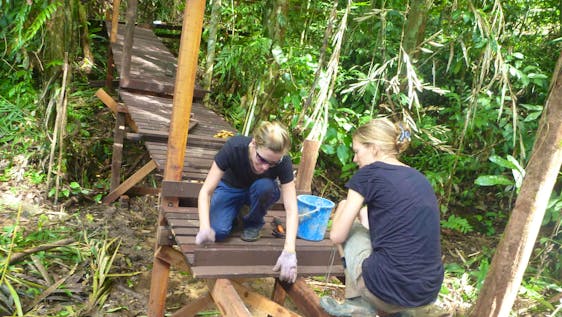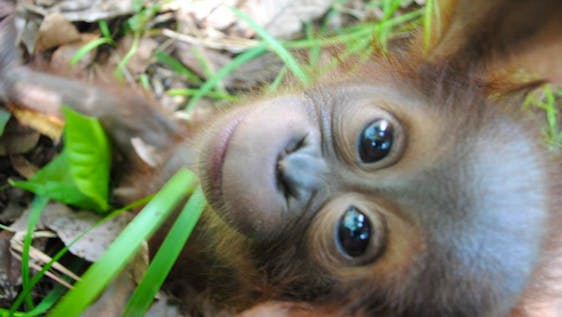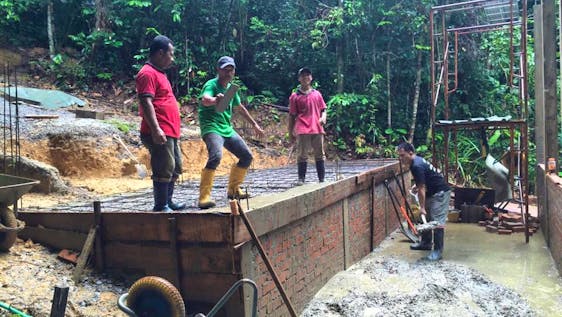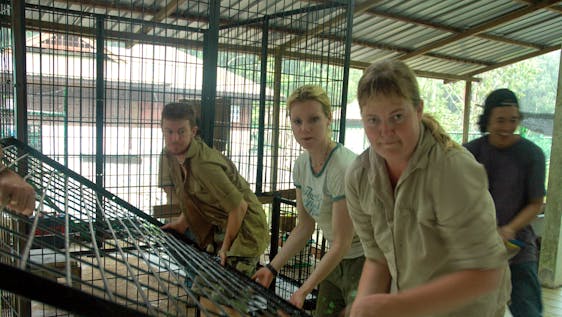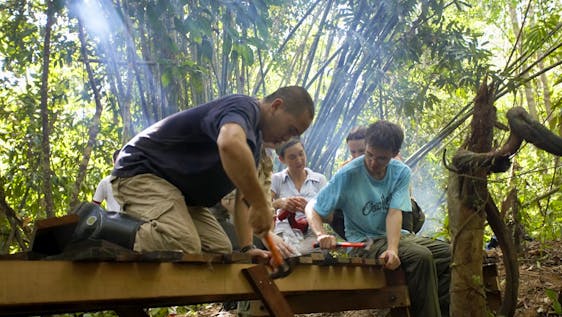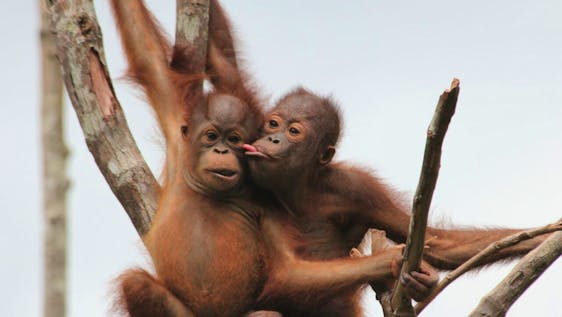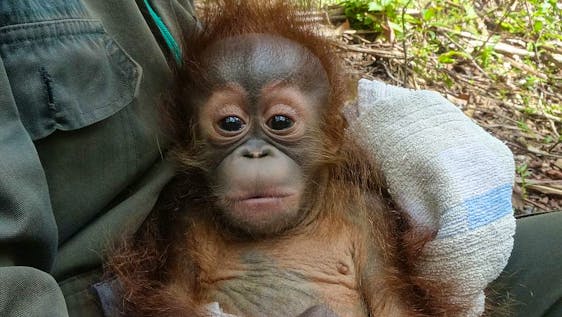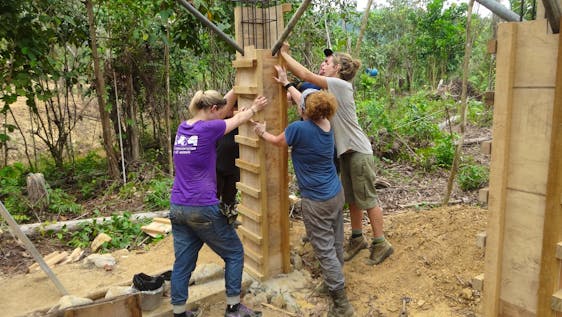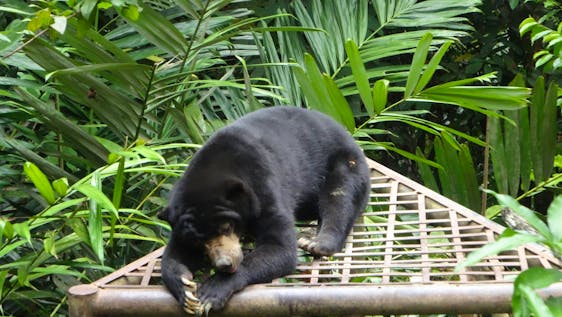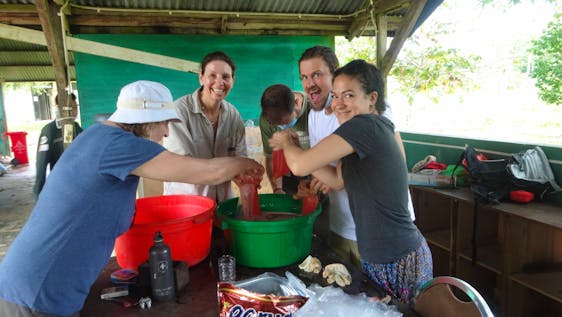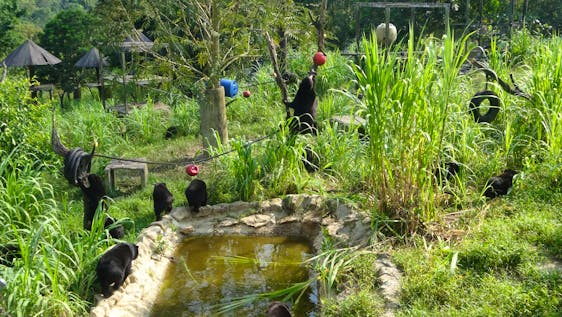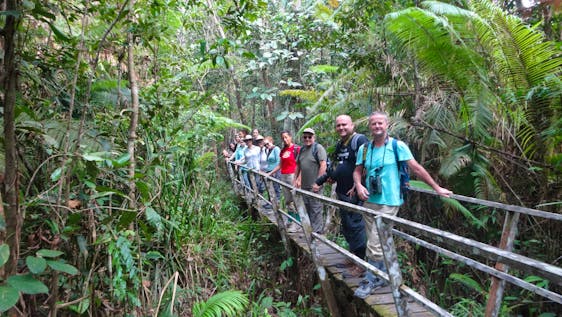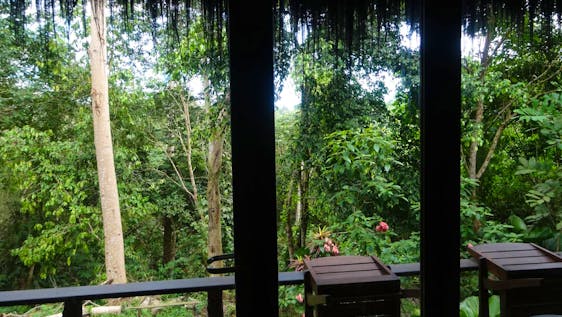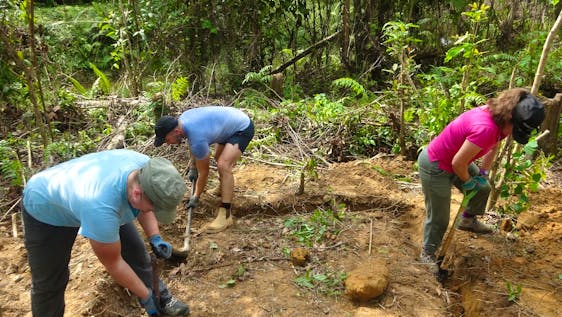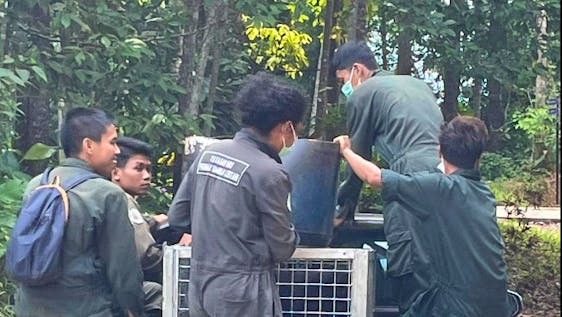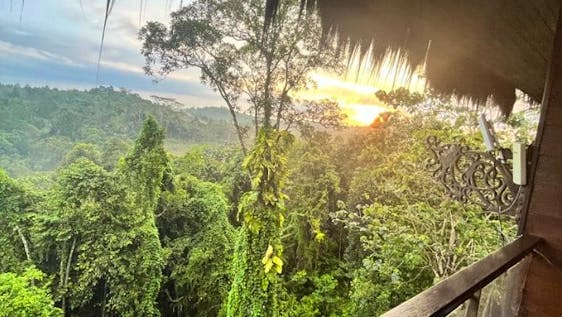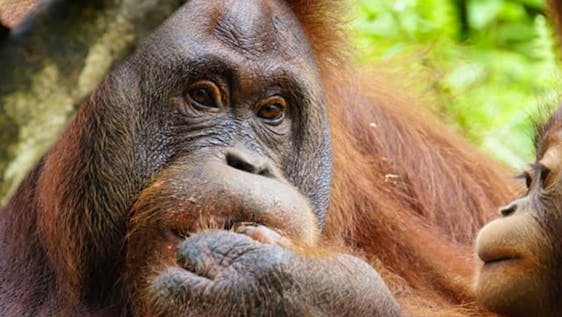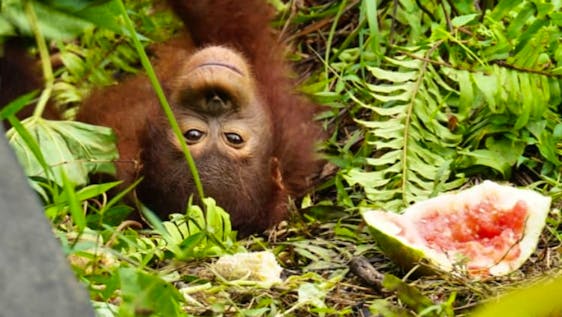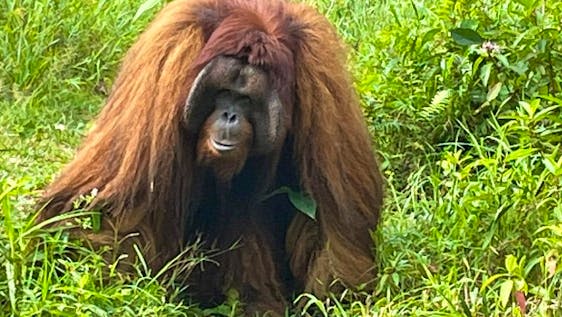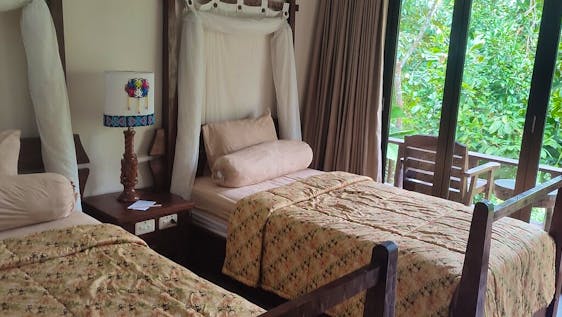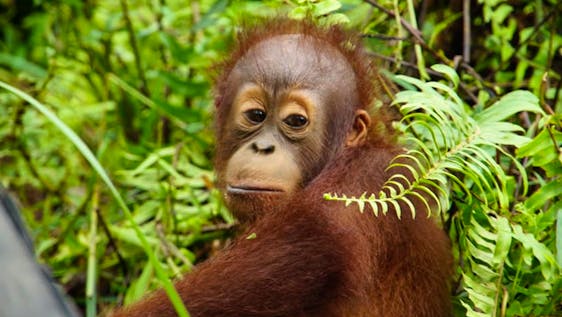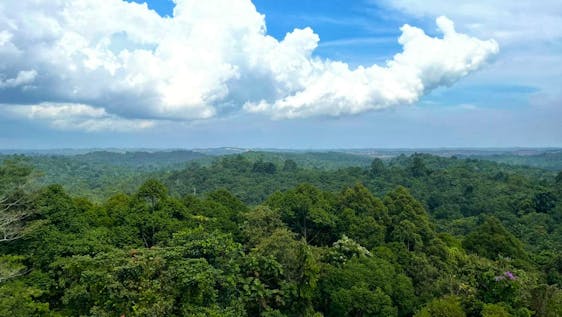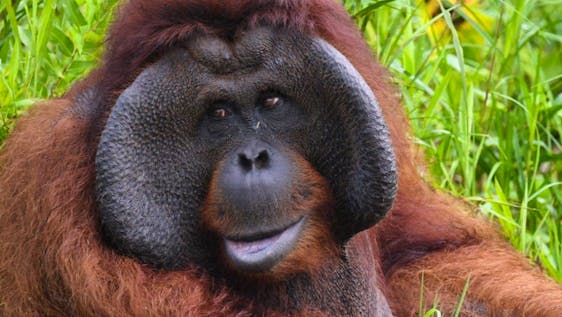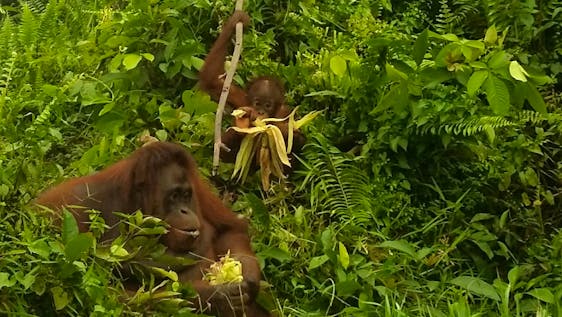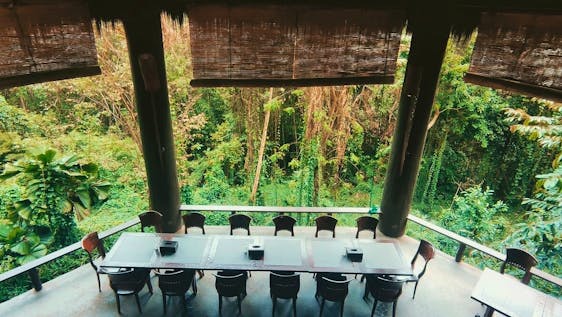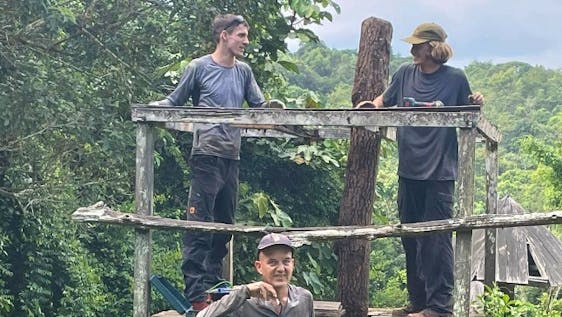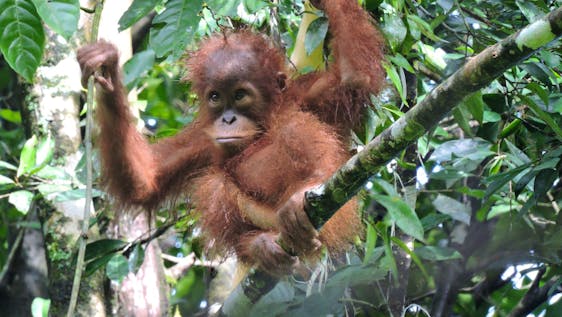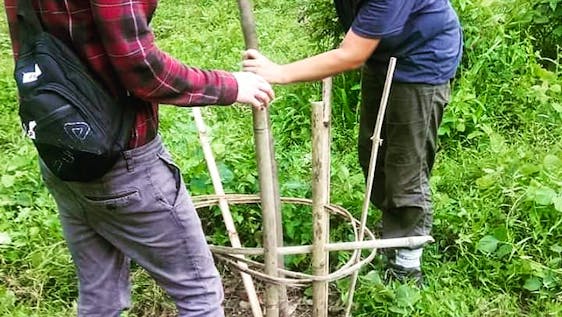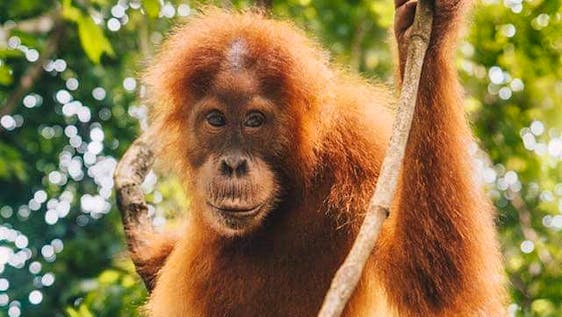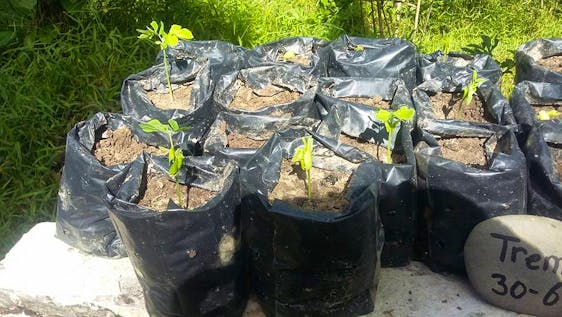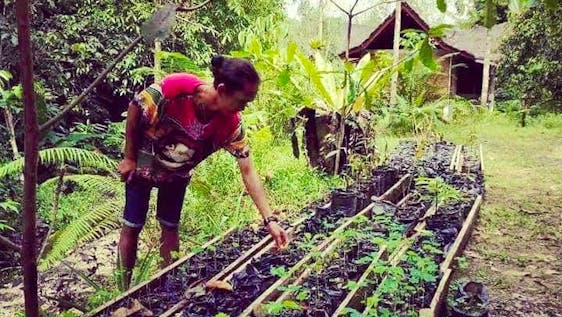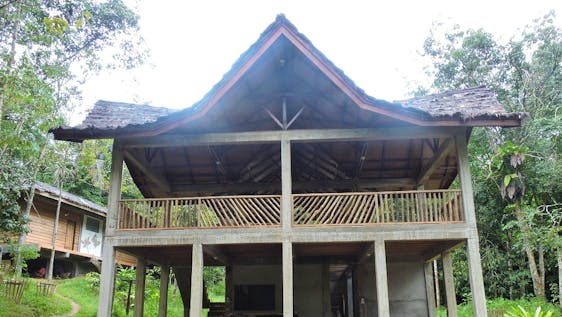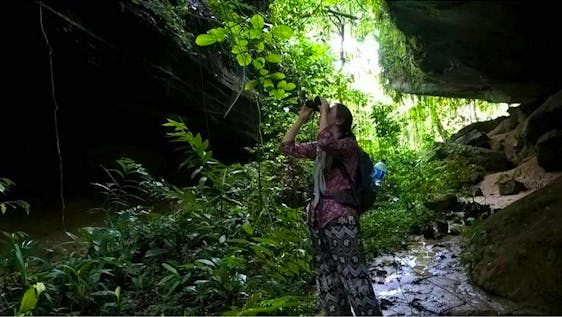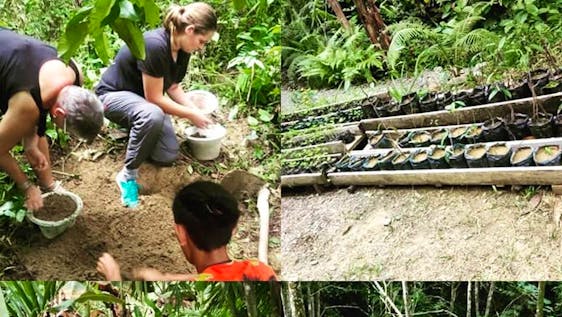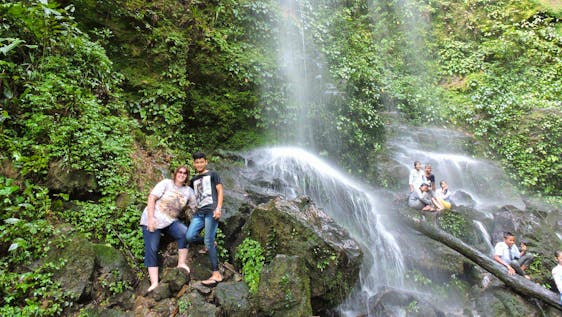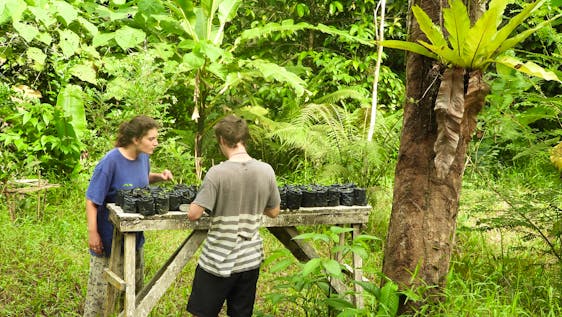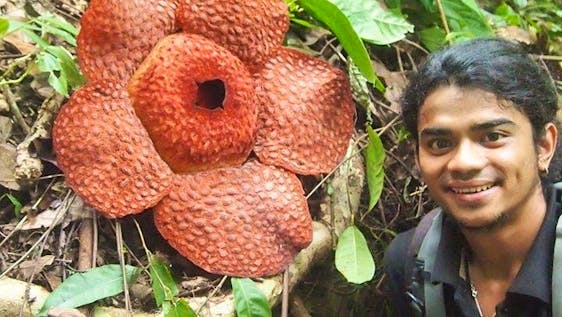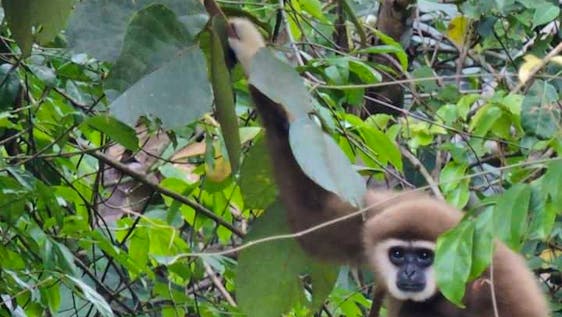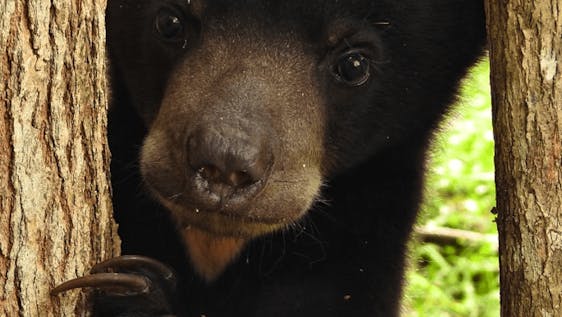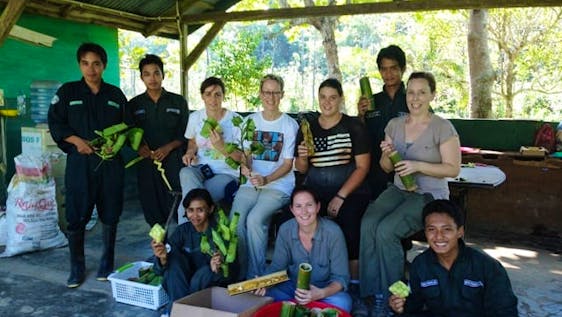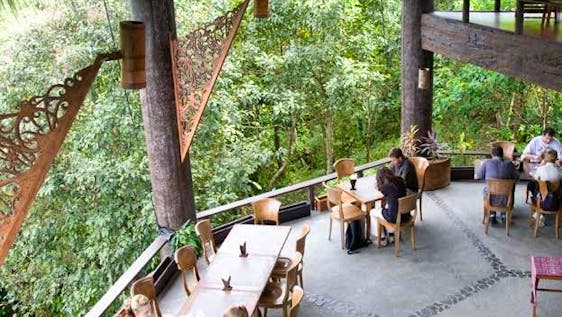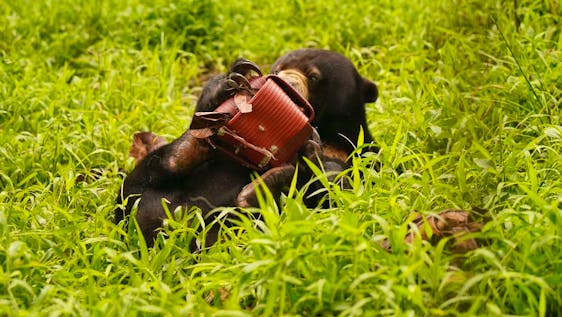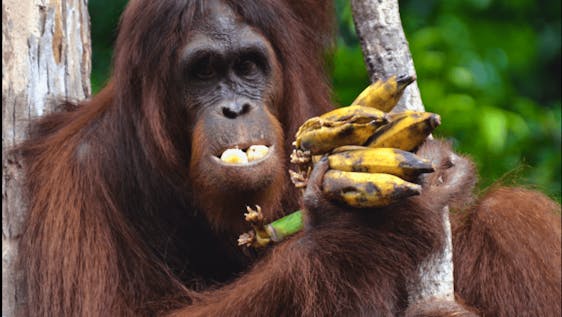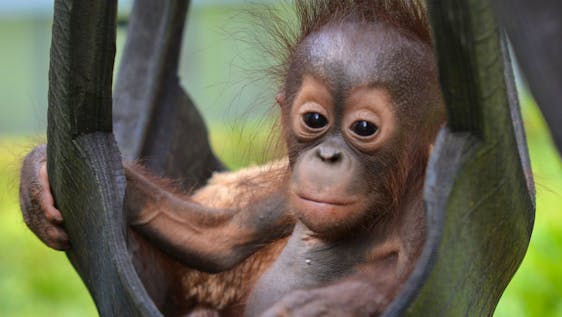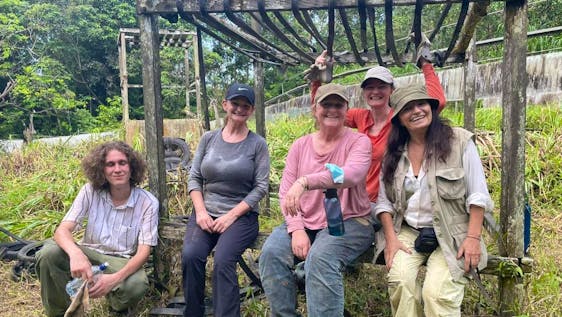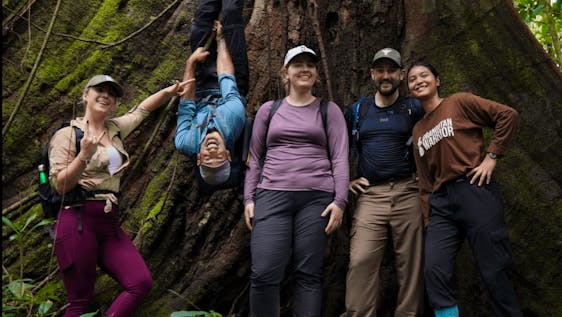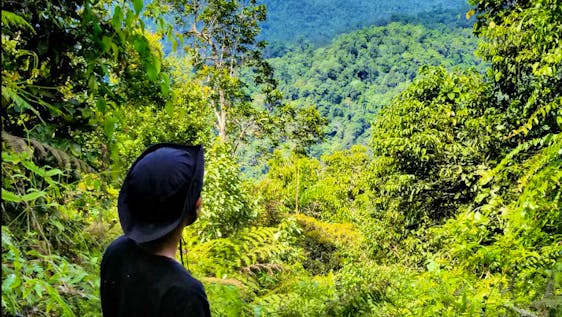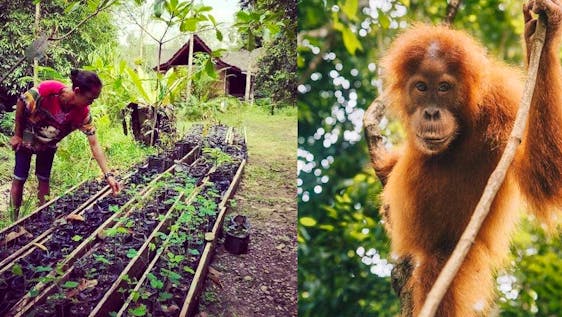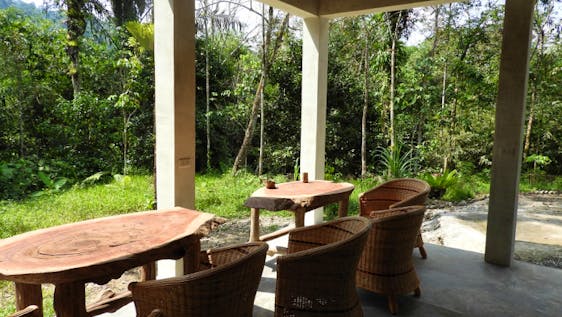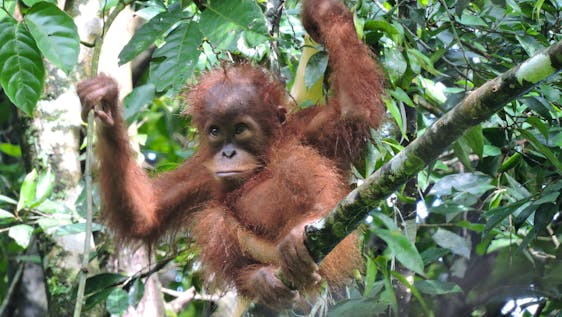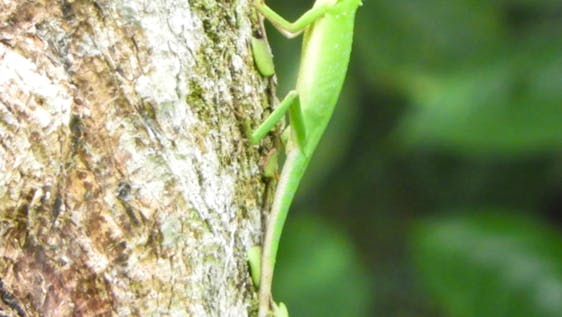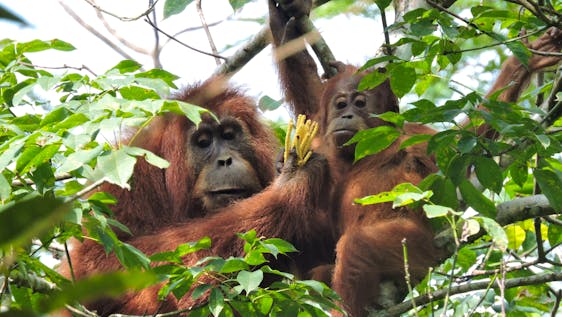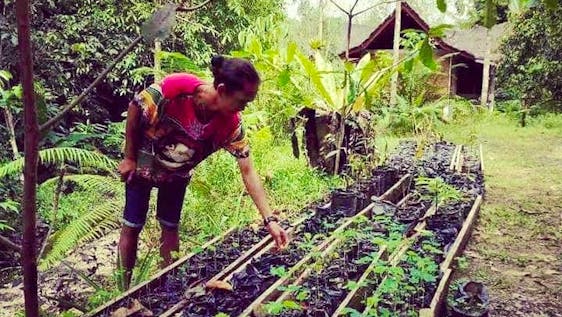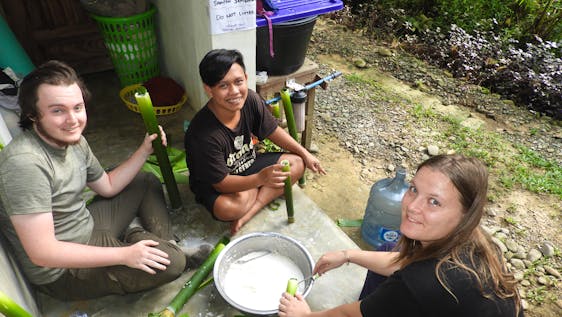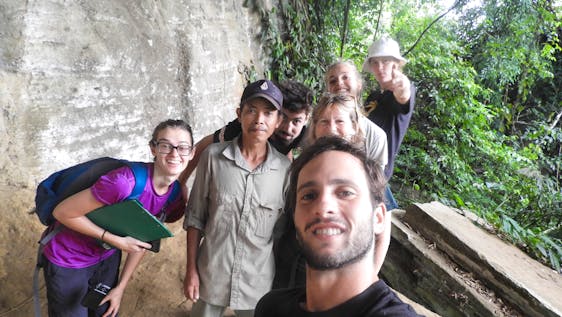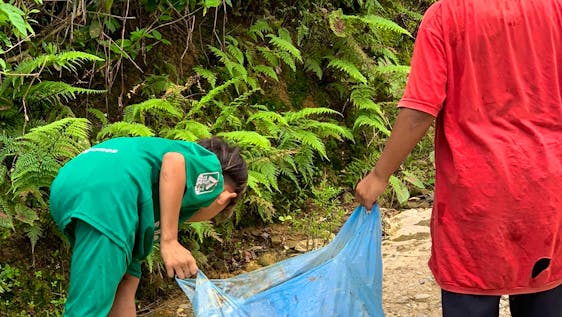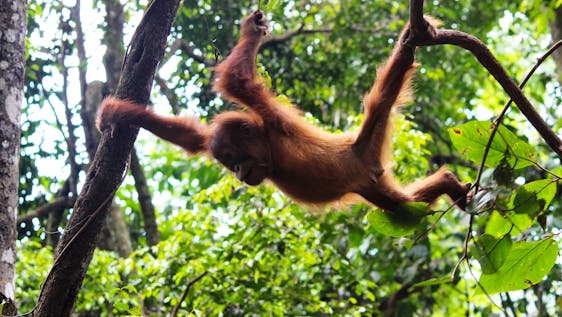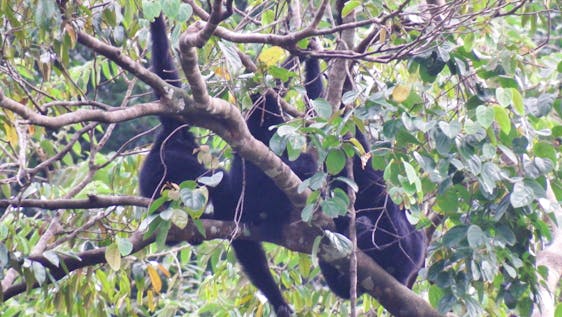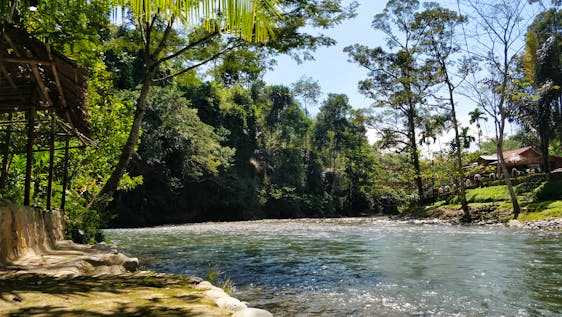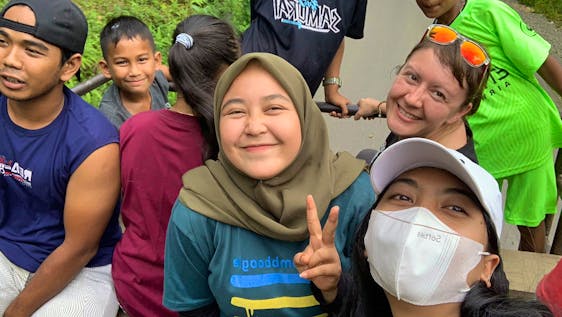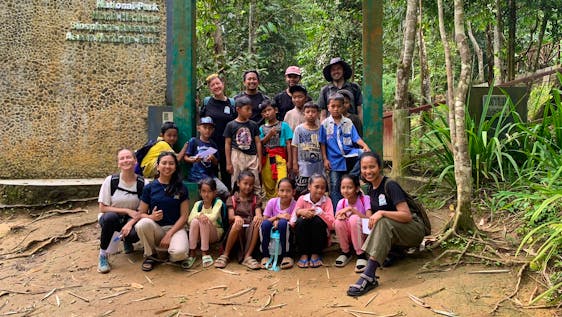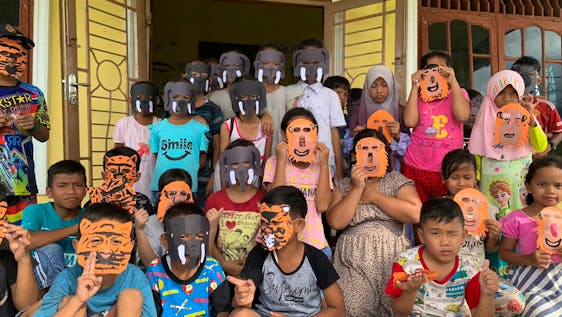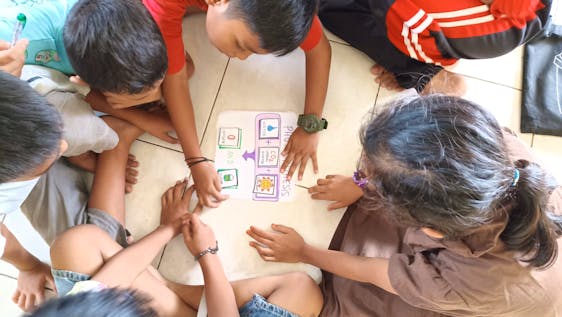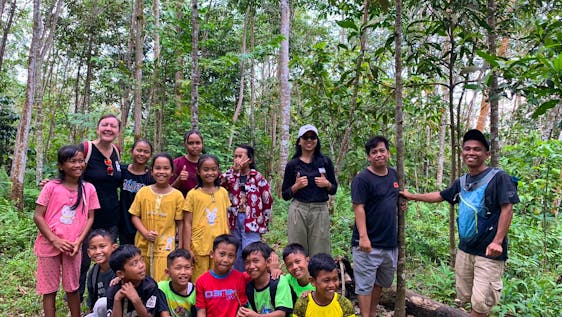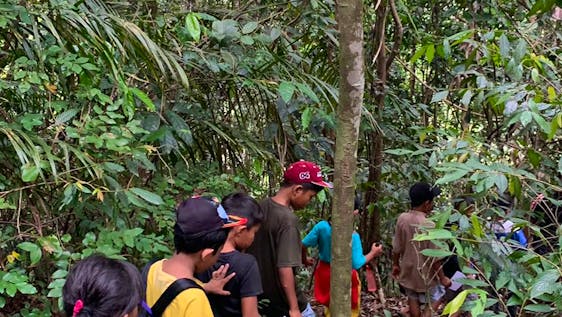Orangutan Sanctuary Volunteer
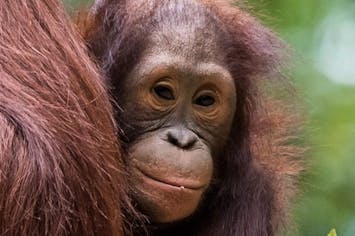
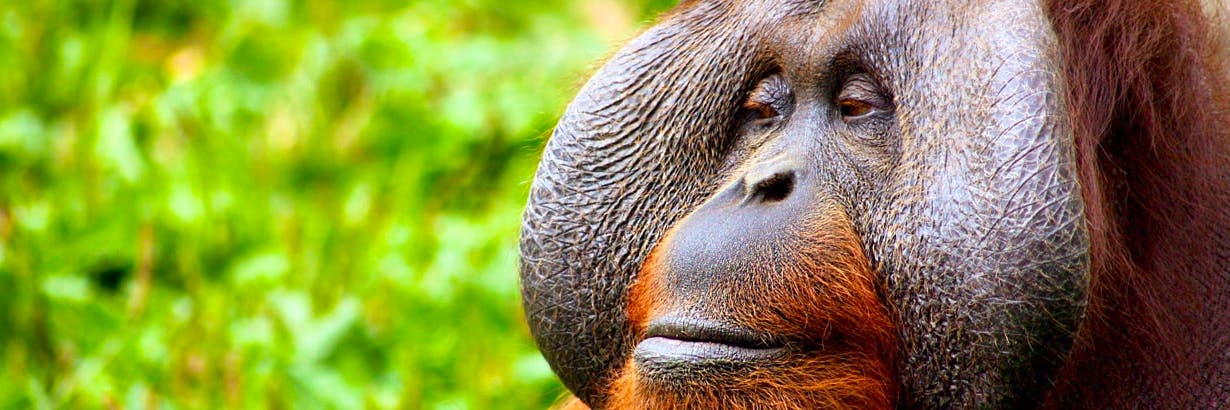
Volunteer with Orangutans in Borneo
Orangutans are one of the species closest related to humans - we share about 97% of our DNA. ‘Orangutan’ means “people of the forest” in Malay and refers to their social behavior and intelligence which resemble that of humans. Orangutans are the largest arboreal mammal, spending most of their lives in trees. Reaching almost two meters, their long arms allow them to move effortlessly through the rainforests of Borneo and Sumatra. Deforestation and poaching have decreased the number of orangutans drastically. Volunteer abroad on a project with orangutans and make sure this endangered species has a chance of survival.
Orangutans have become one of the most critically endangered animals in the world. Their natural habitat has decreased causing the number of orangutans to decline so dramatically over the past decades that experts estimate they will be extinct in the wild in 50 years. To start with, we can already make a difference by avoiding products that contain palm oil from unsustainable sources. Palm oil production is one of the biggest threats to wildlife because of the deforestation that’s required for that plantations. Here’s a list of products containing palm oil created by the World Wildlife Fund that we highly recommend checking out.
🦧 Orangutan Conservation Status 2025
According to a current evaluation, the number of great apes on Borneo has decreased by almost 150,000 over the past decade and a half. It is estimated that there are now only between 50,000 and 100,000 of these animals.Orangutans are critically endangered. The fact that orangutans on Borneo are endangered is certainly not new, but "critically endangered" - i.e. acutely endangered - they did not seem to be so far. According to new studies, however, approximately 82 percent of Borneo orangutans will have disappeared between 1950 and 2025.
Orangutans play a vital role in the ecosystem they inhabit. They are considered the “gardeners” of the forest because they eat fruits and spread the seeds as they move around. Research has shown that orangutans prefer primary and secondary forests as their habitat which indicates the health of their surroundings. Sadly, there are diminishing healthy untouched forests left for orangutans and other wildlife like the Sumatran rhino, the clouded leopard or the Bornean elephant.
🦧 Why are Orangutans endangered?
The reasons why orangutans are critically endangered is manifold. Though most of them are caused by humans, there are some natural factors at play too:
- slow and low reproduction rate
- habitat destruction
- illegal hunting
- illegal pet trade
Slow Reproduction
Of all mammals on earth, orangutans have the slowest rate of development which makes them slow to reproduce. Orangutans can live up to 50 years in the wild, but females only reach their reproductive age at around 13 and usually don’t have offspring before they are 16 years old.Infants are carried until they are up to five years old and can be fed until they are eight years old. They continue to live with their mothers until they are ready to have their offspring and maintain a very close bond. This is why orangutans only have four to five babies during their lifetime.
Primatologists explain the extremely long “childhood” among orangutans is because of the extensive knowledge they receive from their mothers. The mother teaches their child the 300 types of fruits they eat and how to make a bed out of leaves and branches that can hold their body weight and protect them from rain. Orangutans are known to build a new nest every single night. This includes pillows and a blanket.
Their low reproductive rate makes orangutan populations more vulnerable to threats. It takes them a long time to recover from dangers like wildfires that have erased large numbers of orangutans in the past.
Poaching and Illegal Pet Trade of Orangutan babies
Their slow movements and large size make them an easy target for poachers. Illegal hunting is a huge threat to orangutans. They are mainly hunted for illegal pet trade because there's still a big market for baby orangutans in Taiwan and Indonesia. To catch baby orangutans, the mothers are shot and it is estimated that for every baby that reaches the market alive, five others have died. Many fall from the trees when their mothers are shot and die from their injuries or they die of stress and bad treatment during captivity.
Despite their popularity as pets when they are babies, grown orangutans don't make good pets. Like any other wild animal, they grow to a size that is difficult to handle because they're much stronger than humans. The trauma of being captured together with poor handling and keeping leads to aggressive behavior. This is why “pet” orangutans are either abandoned or killed once they grow up.
Illegal orangutan hunting & habitat destruction
Orangutans living close to farms or plantations are often killed to keep them away from the harvest. When their habitat shrinks and they can’t find enough food, orangutans will occasionally leave the safety of the treetops and wander to look for other sources of food. This is not appreciated by the locals and plantation owners.
Plantations are the biggest threat to orangutans nowadays because it requires rainforests to be destroyed. To make matters worse, most plantations also produce palm oil in an unsustainable way. Rainforests in Borneo and Sumatra are not protected by the government and even when they are, the documentation usually gives plantation owners the freedom to continue destroying the habitat of countless endangered species.
The market for palm oil has grown rapidly and is very profitable. This explains why regulatory laws don’t exist. A solution would be to shift toward sustainably produced palm oil from plantations that don’t require burning down forests. If you are interested in this topic and would like to learn more, we recommend checking out the website of the Roundtable on Sustainable Palm Oil.
🦧 What are the different Orangutan species?
Until very recently, there have only been two known species of orangutans, named after the two islands they live on. The Sumatran orangutan can be exclusively found on Sumatra which is a large island in western Indonesia. Their habitat is restricted to the north of the island, namely the Aceh province. The Bornean orangutan lives on Borneo, on both, the Indonesian and on the Malaysian parts of the island.
For a long time, it has been believed that the two species were, in fact, one as they are very similar in their appearance and their behavior. One of the only obvious differences is the longer facial hair of the Sumatran orangutans. Primatologists have observed that they also have closer social bonds and their offspring lives with the mother for a longer time while the Bornean orangutans become independent a bit earlier. Male adults in Borneo have been known to wander from the treetops more often than their Sumatran relatives and they will occasionally travel on the ground on all fours.
In 2017, Orangutan researchers have found a third species, which is quite a sensation as there are only six species of living great apes in total. The group of about 800 individuals that has lived isolated from other orangutans in the north of Sumatra has been named Batang Toru orangutans (Pongo tapanuliensis) after the region in which they were now discovered.
🦧 What makes orangutans so special?
Recent research has shown that orangutans have a culture of their own. This means they pass on knowledge to the next generation. In some parts of Borneo, orangutans will use leaves as napkins. Another group in Sumatra uses leaves as gloves to handle spiky fruits. Orangutans are capable of creating and using easy forms of tools which demonstrates that their cognitive abilities are much higher than those of other great ape species. Orangutans use leaves to build a shelter from rain and will use sticks and branches when they forage for insects or collect honey to avoid being stung. Some orangutans have even been observed using tools to extract seeds from hard-shelled fruits.
🦧 What are the best places to volunteer with Orangutans?
Historically, orangutans had a much larger habitat than they do today. They were native to most parts of Southeast Asia, all the way up to southern China. The fact that only two islands in Asia remain as orangutan habitats today shows how drastic the loss has been. Your volunteer adventure with orangutans will most likely bring you to one of the best orangutan charities on the island Borneo.
Volunteering with Orangutans in Indonesia
If you want to travel to Indonesia, for visa reasons or because you want to explore this breathtaking island country and volunteer with orangutans, you can choose between North Sumatra or Kalimantan (the Indonesian part of Borneo).
The Bornean orangutans are more adaptable to disturbances in their habitat and can also be found in secondary forests. This gives them a larger habitat and better chances of survival.
The Sumatran orangutan is a lot more sensitive to changes in their habitat. This is why they can only be found in the untouched forests of the Aceh province on the island of Sumatra.
Samboja Lestari
Samboja Lestari is a project led by the Borneo Orangutan Survival Foundation (BOS) and is dedicated to reforestation and orangutan rehabilitation. This area, previously known as Samboja, was discovered in the late 1800s because of its oil. The biodiverse rainforest on the east side of Borneo was cleared by the 1950s by the petroleum industry and El Niño ravaged the area in 1982. Whatever was left of the rainforest went up in smoke during the forest fires of 1997 and 1998.
BOS started purchasing land in Samboja (East Borneo) in 2001 and the reforestation efforts began. Samboja was renamed Samboja Lestari (Samboja forever). The project revolves around 3 P’s: people, planet and profit. It empowers the locals while building capacity by encouraging economic development alongside conservation. This makes it sustainable for both the environment as the local community of Borneo.
Securing the Bornean Orangutan population was the main focus of the project. “Forest Schools” were introduced to teach orangutans forest skills allowing them to roam around the forest under supervision. Orangutan islands were set up for those that can’t return to the wild but can live in natural conditions save for a few adjustments.
Samboja Lestari hasn’t regained its biodiversity of the late 1800s but a young forest is emerging rapidly. Samboja Lestari now inhabits endangered bird species like the hornbill, 30 species of reptiles alongside porcupines, pangolins, mouse deer and the endangered proboscis monkey. If you want to volunteer at an orangutan sanctuary, the island Java is a great option. You will find rescue centers and orangutan sanctuaries outside their natural habitat because illegal trade is still very common.
Volunteering with orangutans in Malaysia (on Borneo)
If you want to travel to Malaysia and volunteer with orangutans, most projects are located in Sabah (the north) or in Sarawak (the southwest).
Sepilok
Sepilok is an orangutan rehabilitation Center in Sabah Malaysia. It’s the first rehabilitation for rescued orphaned orangutans and was founded in 1964. Sepilok set out to protect orangutans from deforestation and poaching. 43 sq km of the Kabili Sepilok Forest Reserve serves as a rehabilitation site for orangutans. There’s a center to care for orangutans and other wildlife like sun bears, gibbons, Sumatran rhinos and elephants that need extra medical attention.
60-80 orangutans now live freely in the reserve while about 25 young orphans are housed in nurseries. Because of their long childhood, orangutan infants are paired with an older orangutan so they can develop the skills they need.
With each orangutan killed or captivated, the genetic pool of the remaining individuals shrinks. Reserves like Sepilok play a crucial role in protecting orangutans and other wildlife from the devastating effects of deforestation and the illegal pet trade. It’s the only way these species have a chance of surviving.
Travel and volunteer on the island of Borneo or northern Sumatra and be blown away by the lush green foliage covering the island home to the precious orangutan.
🦧 What will I do as an Orangutan Volunteer?
If you are fed up with all the bad news about orangutans and want to make a difference, volunteer abroad for one of the programs with orangutans This is a once-in-a-lifetime experience where you do your part to protect one of the most endangered species in the world. We will give you insight into what it means to work with orangutans and what to expect from your volunteering journey. We will also highlight the benefits you will gain from volunteering with orangutans.
Your tasks as a volunteer
There are different ways to work with orangutans. Each project focuses on a different part of conservation work. There's one thing that you need to be aware of: NONE of the projects will allow volunteers or visitors to have physical contact with the orangutans! This no-touching policy has multiple reasons. Orangutans are extremely susceptible to any kind of human diseases and their immune system can't fight them. A small infection or illnesses that you might not be aware of can be extremely dangerous to them. When working in enclosures or with food, volunteers will wear gloves, breathing masks and other forms of protective clothing.
Another reason for enclosures is because most animals you will work with have been rescued from captivity and have been mistreated by humans. They are often traumatized. When orangutans are released back into the wild, it is vital for them to keep a distance from humans and flee whenever humans get too close to them.
Close contact to humans in a rescue center or sanctuary is counterproductive and therefore forbidden. An exception to this rule is when an orangutan requires veterinary treatment when it is ill or when raising orphaned infant orangutans.
If you find places online that advertise cuddling baby orangutans or allow close contact to grown-up orangutans, it is a sign they are not interested in protecting orangutans in any way but simply in making a profit through tourists, so stay away!
Depending on what kind of project you choose, your tasks as a volunteer will differ a lot. Some projects focus exclusively on research work, meaning you will be out in the jungle observing wild and semi-wild populations of orangutans while other programs are dedicated to rescuing and rehabilitation. The goal of fieldwork programs is to study the behavior of orangutans, avoid human-animal conflict and understand the health differences between wild and captive animals. This is to be sure that captive animals are in good health when they are released back into the wild and are no danger to their wild relatives. Your tasks at research projects include:
- observing orangutans in the forest
- locating areas with wild orangutans
- taking samples and analyzing of fruit trails
- preparing and analyzing behavioral data sheets
- organising fecal samples
- preparing field equipment and shopping for supplies
- cleaning and maintaining work at the base
Hands-on fieldwork in the forest is demanding physical work and not for everybody. Working at an orangutan sanctuary or rescue center is also strenuous, but you won't be in the forest which can be very hot and humid.Some centers welcome visitors or local school classes to educate people about their conservation efforts. You may be asked to lead groups or give educational talks. The daily tasks at a rescue center usually include:
- creating enrichment that encourages natural behavior
- prepping food and cleaning of the enclosures
- construction and maintenance of the cages
If you can’t decide whether to volunteer at a sanctuary in Borneo or join a field project, there is a middle way. Some projects offer two-week tours that have the best of everything: learning about orangutans and the conservation methods, working at a rescue center for a few days, trekking through the forest and monitor wildlife, engaging in reforestation and even meet local tribes in the rainforest to get an insight into their culture.
🦧 Benefits of Volunteering with Orangutans
Seeing orangutans in their natural habitat is a once-in-a-lifetime experience. That's reason enough for many people to pack their bags and volunteer with orangutans in the wild or in sanctuaries in Indonesia and Malaysia.
Experience
There are plenty of other reasons why this kind of volunteer work could be the right choice for you. If you are interested in studying biology or veterinary medicine, a volunteer program working with orangutans is a great opportunity. You will gain hands-on experience and get an insight into the daily grind of trained wildlife experts, biologists and veterinarians.
Resume
Being able to list this kind of work experience on your CV is another bonus. Even if you are not planning to pursue a career in this field. Volunteering shows that you are capable of physically demanding and hands-on work and that you are motivated to volunteer your free-time to a meaningful cause. It also proves you are aware of pressing issues and take action to do your part.
Travel
Volunteer with orangutans and travel to some of the lushest rainforest of south-east Asia. Take this opportunity to travel and give back to your environment and the local community. Travel combined with volunteering makes you more aware of what’s going in your travel destination.
Learning
Depending on where you choose to volunteer and where you are from, you may refine your English skills. Immersing yourself in a foreign culture and living abroad will allow you to grow as a person and give you a different perspective.
Meeting People
The best part is that you will be surrounded by like-minded individuals that share your passion for orangutan and wildlife conservation. After working and living together for a while, these people might even become your close friends!
Have Fun
Let’s not forget that the time you spend as an orangutan conservation volunteer will also be incredibly fun! You will get to enjoy all the perks of living in nature. Admire wild animals from a safe distance, align yourself with nature’s rhythm and face new challenges.
If you think that joining an orangutan conservation project as a volunteer is just what you were looking for, then go ahead and get started right now! We would love to help you find the right project for you!
EVALUATED NE
DEFICIENT DD
CONCERN LC
THREATENED NT
IN THE WILD EW
 Hotspots
Hotspots
 Monkey Conservation
Monkey Conservation
 South East Asia
South East Asia
 Animal
Animal
 Great Apes Conservation
Great Apes Conservation
 Asia
Asia
 Primate Conservation
Primate Conservation
 Indonesia
Indonesia
 Macaque
Macaque
 Sumatra
Sumatra
 National Park
National Park
 Plastic Reduction
Plastic Reduction
 Waste Reduction
Waste Reduction
 Bear Conservation
Bear Conservation
 Borneo
Borneo
 Malaysia
Malaysia
 Binturong Conservation
Binturong Conservation
 Activities
Activities
 Animal Sanctuary
Animal Sanctuary
 Vervet Monkey
Vervet Monkey
 Vegan
Vegan
 Wildlife Conservation
Wildlife Conservation
 Civet Conservation
Civet Conservation
 Bat
Bat
 Wildcat Conservation
Wildcat Conservation
 Gibbon
Gibbon
 Tiger Conservation
Tiger Conservation
